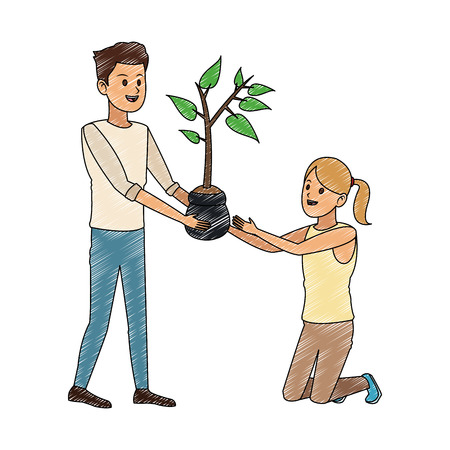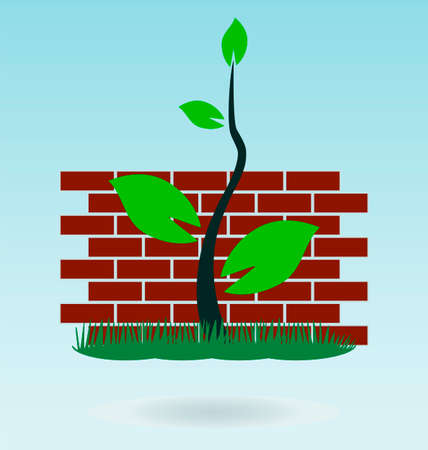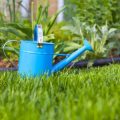1. Understanding Your Backyard Irrigation Needs
Before setting up a DIY irrigation system, it’s important to understand what your backyard actually needs. Every yard is different, and the right watering solution depends on several key factors like your local climate, the type of plants you have, and how your landscape is laid out.
Know Your Climate Zone
The U.S. has a wide range of climate zones—from hot and dry in Arizona to cool and rainy in Washington state. Your zone will impact how much water your plants need and how often you should irrigate.
| USDA Climate Zone | Typical Weather | Irrigation Tip |
|---|---|---|
| Zone 3-5 (Northern U.S.) | Cold winters, short growing season | Water less frequently but deeply during warm months |
| Zone 6-7 (Midwest/Northeast) | Moderate seasons with rain | Supplement natural rainfall with occasional watering |
| Zone 8-10 (South/Southwest) | Hot summers, mild winters | Use drip or soaker hoses to conserve water |
| Zone 11+ (Southern Florida, Hawaii) | Tropical, humid conditions | Watch for overwatering; choose native or tropical plants |
Evaluate Your Landscape Layout
Take note of slopes, shaded areas, sunny spots, and soil types. Water runs off quickly on slopes and may pool in flat areas. Shaded areas typically need less water than full-sun spots.
Things to Observe:
- Which parts of your yard get full sun vs. shade?
- Do you have hills or level ground?
- Is your soil sandy, clay-heavy, or loamy?
Select the Right Irrigation Type for Your Plants
Certain plants thrive better with specific watering methods. Knowing what youre growing helps you pick the most effective setup—like sprinklers for lawns or drip systems for garden beds.
| Plant Type | Irrigation Recommendation |
|---|---|
| Lawn Grass (e.g., Kentucky Bluegrass) | Pop-up sprinklers for even coverage |
| Vegetables (e.g., tomatoes, lettuce) | Drip irrigation to target root zones |
| Shrubs & Bushes (e.g., hydrangeas) | Soaker hoses or drip lines near roots |
| Drought-Tolerant Plants (e.g., succulents) | Minimal irrigation; use manual spot watering if needed |
Create a Simple Yard Map
A basic sketch of your backyard can go a long way. Mark where plants are located, identify sun and shade areas, and note where outdoor faucets are placed. This will help you plan your system more efficiently.
Your Map Should Include:
- Main planting zones (lawn, flower beds, vegetable garden)
- Slope direction or flat areas
- Sun vs. shade regions
- Available water sources (spigots/faucets)
Taking time to assess these details upfront will make building your DIY irrigation system easier—and ensure that it works effectively for years to come.
2. Choosing the Right DIY Irrigation System
When it comes to setting up a backyard irrigation system in the U.S., choosing the right type is key to saving water, time, and money. Your yard size, landscape design, and plant types all play a big role in determining the best system. Let’s break down the three most popular DIY options—drip systems, soaker hoses, and sprinklers—so you can pick what works best for your yard.
Drip Irrigation Systems
Drip irrigation is a great choice for garden beds, flower borders, vegetable patches, or areas with individual plants spaced apart. It delivers water slowly and directly to the roots using a network of tubing and emitters. This method reduces evaporation and runoff, making it one of the most water-efficient options available.
Pros:
- Highly water-efficient
- Minimizes weed growth by targeting only desired plants
- Great for plants that prefer dry foliage (like tomatoes or roses)
Cons:
- Takes time to install and plan properly
- Can clog if not maintained
Soaker Hoses
Soaker hoses are porous hoses that allow water to seep out along their length. They’re ideal for long rows of plants or hedges and are super easy to set up—just lay them down and hook them up to your spigot.
Pros:
- Easy to use and install
- Covers large areas evenly when laid correctly
- Affordable option for beginners
Cons:
- Less precise than drip systems
- May not work well on slopes or uneven terrain
Sprinkler Systems
If you have a lawn or large open spaces, sprinklers might be your go-to. They spray water over a wide area and can be either stationary or rotating. There are even pop-up versions commonly used in suburban lawns.
Pros:
- Ideal for grass lawns and large open areas
- Covers ground quickly with minimal setup effort
- Available in many styles (oscillating, rotary, impact)
Cons:
- Inefficient due to evaporation and wind drift
- Not suitable for targeted watering needs like garden beds
Irrigation System Comparison Table
| Irrigation Type | Best For | Water Efficiency | Ease of Installation | Cost Level |
|---|---|---|---|---|
| Drip System | Garden beds, potted plants, vegetables | High | Moderate to Difficult | Moderate to High |
| Soaker Hose | Shrubs, rows of plants, hedges | Medium to High | Easy | Low to Moderate |
| Sprinkler System | Lawn areas, large open yards | Low to Medium | Easy to Moderate (depending on type) | Low to High (varies by system) |
Selecting the right irrigation system really depends on what kind of yard you have. If you’ve got a veggie garden or flower beds, drip systems offer great control. If you just want an easy fix for your shrubs or rows of plants, soaker hoses are simple and effective. And if you need to keep your lawn green during those hot American summers, sprinklers will do the trick.

3. Materials and Tools You’ll Need
Before you start digging or laying out pipes, it’s important to gather all the tools and materials needed for your DIY backyard irrigation system. Most of these items can be easily found at major American hardware stores like Home Depot, Lowe’s, Ace Hardware, or even online retailers like Amazon.
Essential Tools
These are the basic tools you’ll need to install and maintain your irrigation system:
| Tool | Purpose | Recommended Brands |
|---|---|---|
| Shovel or Trenching Spade | Digging trenches for pipes | Fiskars, Razor-Back |
| PVC Pipe Cutter | Cutting irrigation tubing cleanly | RIDGID, Milwaukee |
| Teflon Tape | Sealing threaded connections | 3M, Blue Monster |
| Drill with Bits | Mounting timers or valves if needed | DEWALT, BLACK+DECKER |
| Measuring Tape | Measuring distances for pipe layout | Stanley, Komelon |
Irrigation Materials Checklist
The type of system you choose (drip, soaker hose, or sprinkler) will determine exactly what materials you need. Heres a general checklist:
| Material | Description | Budget Tip |
|---|---|---|
| PVC or Poly Tubing | Main lines that carry water through the yard | Buy in bulk rolls to save money per foot |
| Emitters/Drippers or Sprinkler Heads | Controls how water is distributed to plants or lawn areas | Kits often include multiple heads at a lower price per unit |
| Irrigation Timer/Controller | Saves time by automating watering schedules | B-hyve and Rachio offer smart options compatible with Wi-Fi systems |
| Connectors & Fittings (Tees, Elbows) | Used to route tubing where needed around your yards layout | Kits from brands like Rain Bird include assorted connectors at a good value |
| Pressure Regulator & Filter (for drip systems) | Keeps pressure safe and prevents clogs in emitters | Add-on kits are more affordable than buying individually |
| Backflow Preventer Valve | Keeps dirty water from re-entering your home’s water supply—required in many states | Check local codes before purchasing; some cities offer rebates when installed properly |
Pro Tips for Budget-Friendly Shopping:
- Look for end-of-season sales: Late summer and early fall are great times to score deals on irrigation kits.
- Use store apps and loyalty programs: Many hardware stores offer exclusive discounts through their mobile apps.
- Shop local garden centers: Some independent nurseries sell high-quality components at competitive prices.
- Avoid overbuying: Plan your layout first so you only purchase what you need.
This list should get you well on your way to building an efficient and cost-effective backyard irrigation system that meets both your gardening needs and local U.S. standards.
4. Step-by-Step Installation Guide
Installing a DIY backyard irrigation system might sound intimidating, but with the right plan and tools, it’s totally doable—even for beginners. Follow this easy step-by-step guide to get your system up and running efficiently. This guide is tailored for U.S. homeowners, using common tools and materials available at major home improvement stores like Home Depot or Lowe’s.
Step 1: Plan Your Irrigation Zones
Start by dividing your yard into zones based on water needs. For example, lawns, flower beds, vegetable gardens, and shrubs may each require different amounts of water. Group plants with similar watering requirements together.
Example Zone Layout:
| Zone | Area Type | Watering Needs |
|---|---|---|
| Zone 1 | Lawn (front yard) | High (3–4 times/week) |
| Zone 2 | Flower Beds | Medium (2–3 times/week) |
| Zone 3 | Vegetable Garden | High (daily in summer) |
| Zone 4 | Shrubs & Trees | Low (1–2 times/week) |
Step 2: Choose Your Irrigation Type
Select the irrigation method that works best for each zone. Drip irrigation is great for gardens and flower beds, while pop-up sprinklers are ideal for lawns. Soaker hoses work well for shrubs and trees.
Step 3: Gather Materials and Tools
You’ll need the following tools and supplies, all of which you can find at most U.S. hardware stores:
- PVC pipes or polyethylene tubing
- Irrigation emitters or sprinkler heads
- Pipe cutter or garden shears
- Teflon tape and connectors/fittings
- A backflow preventer (required by code in most U.S. areas)
- An irrigation timer/controller
- Trowel or trenching shovel
Step 4: Lay Out the System on the Ground
Use stakes and string or spray paint to mark where your pipes or hoses will go. Make sure to avoid walkways and utility lines—call 811 before digging to check for underground utilities.
Step 5: Dig Trenches (If Needed)
If you’re installing underground piping (like PVC), dig trenches about 6–8 inches deep along your layout lines. For drip systems laid above ground, you can skip this step.
Step 6: Connect Pipes or Tubing
Attach your main supply line to a spigot or hose bibb using an adapter. Then run the tubing along your layout, cutting and connecting as needed using T-joints or elbows. Seal connections with Teflon tape to prevent leaks.
Step 7: Install Emitters or Sprinkler Heads
Add drip emitters near plant roots or install sprinklers evenly across lawns. Ensure proper spacing so all areas receive sufficient water without overspray.
Step 8: Attach a Backflow Preventer & Timer
A backflow preventer keeps dirty water from flowing back into your homes clean water supply—most U.S. cities require this by law. Attach it between your spigot and the timer, then connect the timer to control watering schedules automatically.
Irrigation Timer Tip:
- Lawn Zones: Water early morning, every other day during dry months.
- Drip Zones: Run longer but less frequently—around 30-60 minutes, twice a week.
Step 9: Test the System
Turn on each zone one at a time to check for leaks, clogs, or uneven coverage. Adjust heads or emitters as needed until everything runs smoothly.
Step 10: Cover Trenches & Secure Tubing
Bury any underground pipes and secure above-ground tubing with stakes. Make sure everything is neatly tucked away to avoid tripping hazards or mower damage.
Your system is now ready to keep your backyard green and thriving!
5. Seasonal Maintenance and Troubleshooting Tips
To keep your DIY backyard irrigation system running smoothly all year long, it’s important to perform seasonal maintenance and know how to troubleshoot common issues. In the U.S., where weather varies widely depending on your region, preparing your system for winter and checking it regularly during the growing season will save you time, money, and hassle.
Winterizing Your Irrigation System
Before freezing temperatures hit, especially in northern states, you’ll need to winterize your irrigation system to prevent damage from frozen water left in the pipes. Here’s a simple step-by-step:
How to Winterize Your System
- Turn off the water supply: Shut off the main valve that feeds your irrigation system.
- Drain the lines: Use manual drain valves or an air compressor (blow-out method) to clear water from the pipes.
- Open all valves: Let any remaining pressure out by opening all zone valves and backflow preventers.
- Protect above-ground parts: Cover exposed pipes, backflow preventers, and control boxes with insulation or weatherproof materials.
Routine Checks During Spring and Summer
Once warmer weather returns, its time to get your irrigation system ready for action again. Regular inspections help ensure everything works efficiently and your lawn and garden get just the right amount of water.
What to Check Each Season
| Component | What to Look For | Action Needed |
|---|---|---|
| Nozzles & Sprinkler Heads | Clogs, damage, misalignment | Clean or replace; adjust spray direction |
| Pipes & Tubing | Leaks, cracks from freeze-thaw cycles | Patch or replace damaged sections |
| Valves & Timers | Corrosion, malfunction, incorrect settings | Test each zone; reset timers as needed |
| Sensors (rain/moisture) | Dirt buildup or non-responsiveness | Clean sensor; test functionality |
Troubleshooting Common Issues
Poor Water Pressure
If some zones aren’t getting enough water pressure, check for clogged filters, leaks in underground lines, or partially closed valves. Also make sure your system isn’t running multiple high-demand zones at once.
Irrigation Zones Not Activating
This could be due to a faulty solenoid valve or wiring issue. Use a multimeter to check if power is reaching each valve. Replace solenoids if necessary.
Damp or Dry Spots in Lawn
This usually means sprinklers are out of alignment or blocked by grass or debris. Adjust heads so they overlap properly and trim any obstructions.
Timer Malfunctions
If your controller isn’t working as expected, check for dead batteries (in case of backup), power supply issues, or programming errors. Refer to your specific models manual for reset instructions.
Tip:
Avoid watering during windy days or at midday when evaporation rates are highest. Early morning is best for most U.S. climates.
By staying on top of seasonal care and knowing how to fix common problems, your DIY irrigation system can stay in top shape—and your lawn will thank you!


